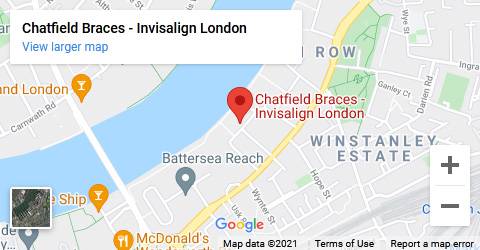
Gappy Teeth
“Gappy teeth”is a common name for a condition experienced by both young and older people. This is where there is a prominent space between two teeth. It is common between the upper and sometimes lower front teeth, but can also occur between any other two teeth.See also our article on “diastema”- the term for a prominent gap between the two central teeth.
Causes of gappy teeth
This condition does not have one sole cause, but different factors can lead to its occurrence. The sizes of the teeth, jaw bone, and labial frenulum (the flap of tissue connecting the front lips and jaw) all contribute to this condition.
Space can be caused when the size of the jaw bone and the size of the teeth do not match, causing an extra space between the teeth or causing the teeth to be “crowded”. These spaces between the teeth can occur if the teeth are too small, while crowding will occur if the teeth are too large. When this is the cause of this condition, it is usually longer- term.
A missing or undersized tooth can also cause a gap between the teeth. This is common with the lateral incisors (the teeth located just next to the most central teeth). This space can then be occupied by the development of the upper central incisor.
Gappy teeth may also becaused or mademore obvious whenthe labial frenulum, the tissue that connects the lip to the gum, is oversized. This tissue may continueto grow and pass between the two front teeth, causing a space between them by blocking the natural space between the two teeth.
Gappy teeth can also develop from gum disease; as it causes the gum to be inflamed, and the inflammation damages the gums and tissues that support the teeth. This can cause a tooth to be lost and gaps to form between them. The presence of this disease is clear by symptoms including red and swollen gums, bleeding gums, bone loss and loose teeth.
An incorrect swallowing reflex is also a cause of gappy teeth. This happens in people whose tongue presses against the palate (the roof of the mouth) while swallowing. While this is common in some people, others develop a kind of reflex called tongue thrust. With this,the reflex makes the tongue press against the front teeth. These reflexes, over time, cause gaps to form between the teeth.
Gappy teeth can also be caused by bad habits like thumb-sucking. This habit is mostly found in children, and it causes the front teeth to be pulled forward. This pull causes gaps to form between the teeth.
Treatment of gappy teeth
Unless gappy teeth results from an issue such as gum disease, it doesn’t usually need treatment. Many people, however, still wish to be treated for cosmetic reasons. The following are some ways of treating this condition:
- The use of braces
These are one of the most commontreatmentsforgappy teeth. Braces are designed with brackets and wires which apply pressure on the teeth, and slowly move them together and closeprominent gaps. There are some invisible or removable braces,such as Invisalign, and they are also very effective at treating gappy teeth.
- Veneers or bonding
These can sometimes be used if you do not wish to use braces. The use of veneers or bonding is a cosmetic solutionwhich helps fill the gaps between teeth. In this procedure, a composite material which has the colour of a tooth which can either fill an existing gap, or cover the teeth and improve their appearance. A veneer fits over a tooth much like a false fingernail. This procedure is mostly used if the teeth are visibly cracked or broken. Sometimes, people may also opt for a dental bridge if one of their teeth is missing.
- Surgery
This procedure is mostly used if the gap is caused by an oversized labial frenulum. Having surgery will help remove the excess tissue, so that the space can be freed for the two teeth to grow naturally. After the surgery, patients whose gaps were particularly large are usually encouraged to use braces so that the gaps can be fully closed.
- Treating the underlying infection (i.e. gum disease)
The first step to treating the gap caused by gum disease is to treat the gum disease. There are different treatment methods; including scaling and root planing to remove the plaque that is hardened above and below the gums. This hardened plaque is called tartar, and the removal of this tartar helps in eliminating the disease-causing bacteria. It also makes the tooth surfaces cleaner, and easier for you to keep clean by flossing and brushing.
When gum disease requires the removal of the extensive tartar, surgery may be required. This surgery may also involve the regeneration of bone and tissue.
When the gum infection is successfully treated, other treatment options can then be considered to close the gaps between the teeth.
Prevention of gappy teeth
Not all gappy teeth are preventable, but the risk of developing them can be reduced. The gaps that cannot be prevented include those that are caused by a mismatch of the teeth and jaw bone size, or factors such as missing teeth. These spaces cannot be prevented without professional dental treatment. However, the options for treating these issues are generally very effective.
Preventing children from sucking their thumb extensively is an effective way of preventing gappy teeth later in life. Sucking is normal to a point in young children, but be sure to bring your child to see the dentist regularly, as they are best able to monitor the position of their teeth and identify any issues.
Another way of preventing gappy teeth is by learning good swallowing reflexes. Those with a tongue thrusting habit can re-learn how to swallow, by consciously pushing their tongue up so that it rubs against their palate (roof of the mouth). When this habit is successfully broken, the widening of the gap between the teeth can be stopped.
Generally, it is important to maintain good oral hygiene. Maintaining good oral hygiene is known for keeping the mouth healthy and reducing the risk of gum disease and tooth loss- both of which can result in gappy teeth.
Getting help
If you believe you have prominent gaps between any of your teeth, it is best to have your teeth properly examined by a dentist. Contact us to book an appointment if you would like to discuss this further.
Recent Google Reviews

 Great service from the team. Needed some emergency filling and was given same day appointment.
The practice is clean and well kept. Dentist and dental nurse were awesome. I will be registering with the practice and use then for my routine check ups and any dental work that needs doing!
Great service from the team. Needed some emergency filling and was given same day appointment.
The practice is clean and well kept. Dentist and dental nurse were awesome. I will be registering with the practice and use then for my routine check ups and any dental work that needs doing!

 One of the greatest Invisalign provider in London, Dr Pakan was so honest and clear about the cost. I’ve got my Invisalign treatment with monthly plan it was around £25 a month. Reception was great, I was late during my treatment and Suze helped me to get the latest appointment to see the Dr Pakan.
One of the greatest Invisalign provider in London, Dr Pakan was so honest and clear about the cost. I’ve got my Invisalign treatment with monthly plan it was around £25 a month. Reception was great, I was late during my treatment and Suze helped me to get the latest appointment to see the Dr Pakan.

 I finally completed my treatment plan. So happy with my smile. Dr Pakan was amazing and done the best plan with Invisalign treatment for me. I've got all the payment on monthly basis with 0% APR. I didn't expect the cost to be easier than I thought. Suze was helpful and friendly at the reception.
I finally completed my treatment plan. So happy with my smile. Dr Pakan was amazing and done the best plan with Invisalign treatment for me. I've got all the payment on monthly basis with 0% APR. I didn't expect the cost to be easier than I thought. Suze was helpful and friendly at the reception.

 I have just finished my Invisalign course with Chatfield Dental Braces. I loved the fact that the braces were invisible and no one at work noticed I was wearing them. It was also very good to be able to take them out for cleaning and eating and for my wedding!
I have just finished my Invisalign course with Chatfield Dental Braces. I loved the fact that the braces were invisible and no one at work noticed I was wearing them. It was also very good to be able to take them out for cleaning and eating and for my wedding!

 Very friendly staff and service
Very friendly staff and service
Map Title
 Click To View Full Map
Click To View Full Map 020 71834041
020 71834041
 info@chatfieldbraces.co.uk
info@chatfieldbraces.co.uk




